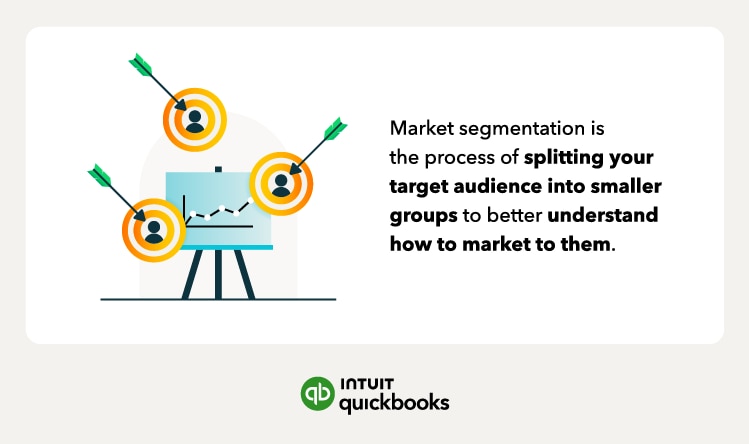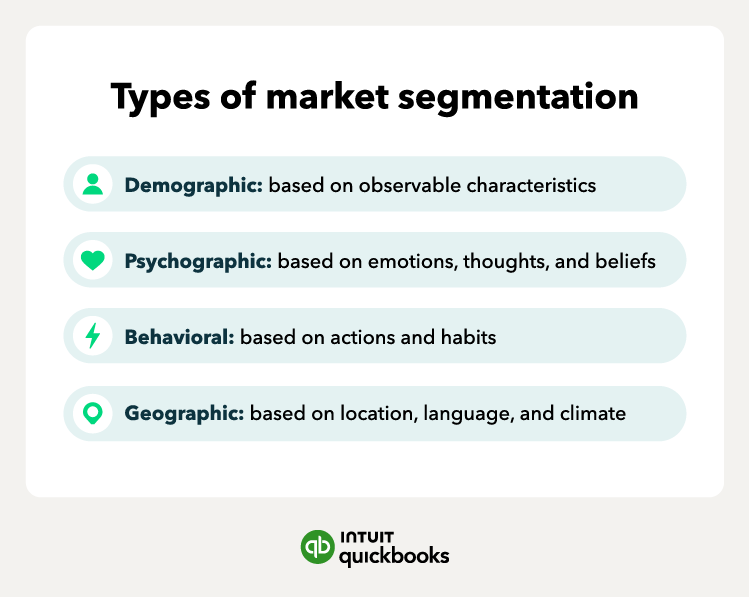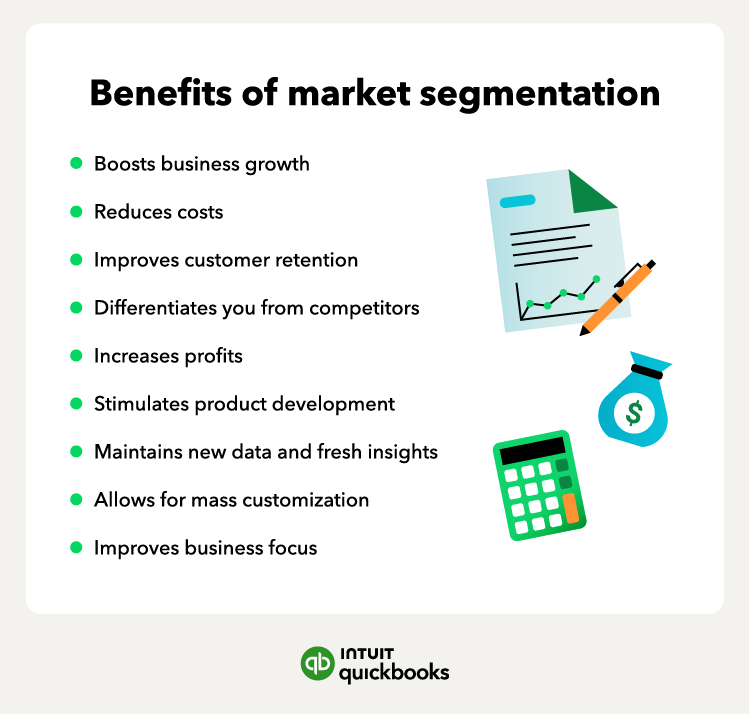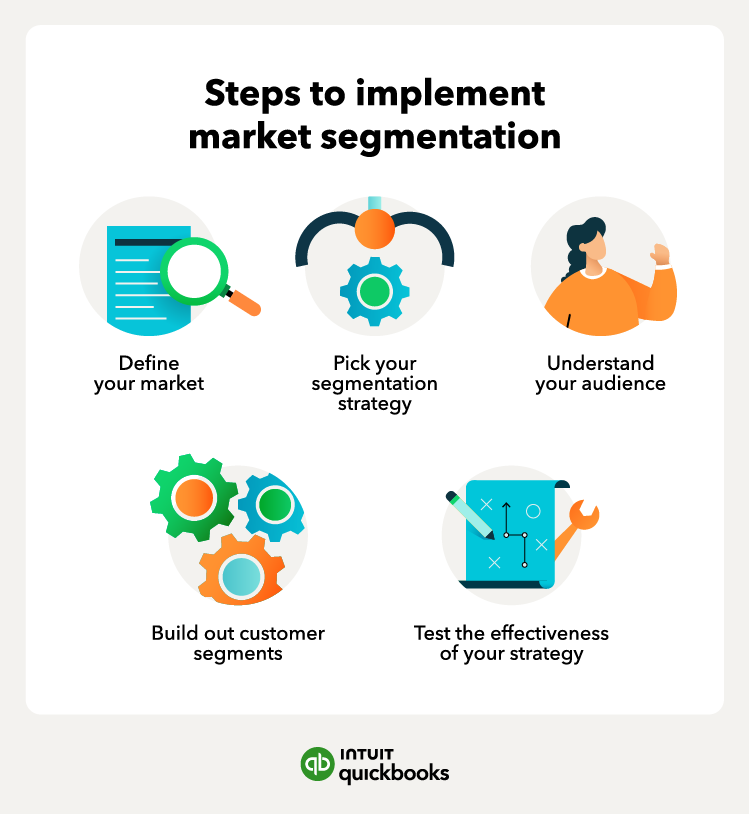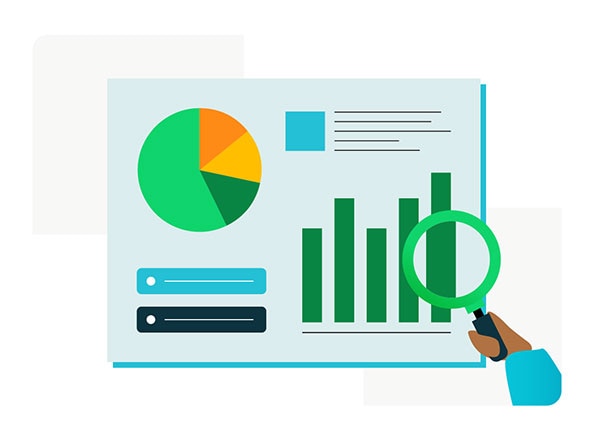There are four main types of marketing segmentation, including demographic, psychographic, behavioral, and geographic. Explore each type, examples, and pros and cons for each to help determine which type is the best for your business.
Demographic segmentation
Demographic segmentation is the process of grouping consumers together based on characteristics that are observable. These characteristics include gender, income, family size, religion, nationality, education level, age, and ethnicity.
This type of segmentation process is helpful in that it allows companies to focus their resources and advertising efforts more effectively, which also makes it a popular choice because the statistics are easy to interpret.
Pros:
- The information is relatively easy to access.
- Research is not costly to implement or obtain.
- It allows for improved personalization since you can present different messaging to different segments.
Cons:
- Limited effectiveness since people in the same demographic don’t always want the same thing.
- Demographic information is usually vague, so it can be hard to create tailored marketing campaigns.
- Data can change drastically in a short period of time, so it can be hard to guarantee that the information will always stay true to that individual (for example, marital status or age).
Demographic segmentation example
This type of market segmentation is seen with many luxury brands. For example, Gucci and Dior advertise their products through luxury magazines, which target people within a certain income bracket. Another example is seen with Saga Holidays—they only market their travel packages to people over 50.
Additional forms of demographic segmentation
Here are a few less common forms of demographic segmentation that you can implement into your company’s strategy:
- Generational segmentation: This is segmenting based on each generation group, such as millennials, Generation X, baby boomers, and so on.
- Life stage segmentation: This strategy splits up groups based on what stage they’re at in life, such as new parents, singles, or married couples.
Psychographic segmentation
Psychographic segmentation occurs when consumers are split up into groups based on psychological traits, such as emotions, thoughts, lifestyles, values, and beliefs.
This kind of qualitative research tracks the motivation behind the behavior, rather than the consumer’s behavior itself. Much of this data can be gathered through surveys, interviews, digital analytics in social media, and focus groups. This is often seen as the best type of market segmentation since this type of research serves as great insight into how your customer thinks.
Pros:
- You can customize different products for each persona you discover.
- It stimulates increased communication since you’ll be able to connect to the consumer on a more emotional level.
- You can better identify how and why a customer uses your product.
Cons:
- It can be more costly to get insights since you need to gather qualitative data.
- Results might be misleading since psychographic data may not uncover exactly why a customer bought your product.
- It’s more complex to gather data since you need answers to specific questions.
Psychographic segmentation example
A great example of psychographic segmentation is seen with companies that sell plant-based products. Those companies will perform psychographic segmentation research to find consumers who follow a plant-based lifestyle, such as vegetarians and vegans.
Behavioral segmentation
Behavioral segmentation groups customers based on their behaviors and actions. This differs from psychographic segmentation because it’s looking into patterns such as purchase, usage, and consumption of a product.
These patterns can be observed in online shopping habits, website or app activity, brand loyalty, and what needs a customer is trying to fulfill with your product. Behavioral segmentation can also gather insight about seasonality and occasion purchasing and help you maximize your digital marketing efforts.
Businesses collect behavioral data through the use of website cookies, third-party data sets, and purchasing data from a CRM platform.
Pros:
- It gives you the ability to understand the most effective time to influence purchases and how different groups should be targeted.
- You’re better able to analyze historical behavior patterns to predict future ones.
- It allows you to make smarter decisions about how to best allocate resources, time, and budget.
Cons:
- Customer behavior is never 100% accurate since data is subjective.
- Behaviors never remain the same with customers, so your strategies will have to be adaptable.
- You may have to hire a behavioral specialist to analyze your data, which can be costly.
Behavioral segmentation example
An example of behavioral segmentation can be seen with a beauty retailer website that may find that older purchasers lean toward purchasing bottled shampoo, while younger purchasers prefer bar shampoo.
This can also be seen with companies that launch advertising campaigns for special occasions such as Valentine’s Day and Christmas.
Additional behavioral segmentation types
There are also a few subtypes of behavioral segmentation strategies you can utilize although they aren’t as popular. This includes:
- Value segmentation: This is a way of splitting consumers into groups based on how much they’re likely to spend by looking at previous purchase data.
- Seasonal segmentation: This process studies and groups together consumers based on seasonality purchasing, such as holidays and events.
Geographic
Geographic segmentation is grouping your target audience based on their location and its characteristics. Although this is a simpler form of market segmentation, the data is highly useful since it allows you to send out location-specific information and ads.
Geographic segmentation can identify users by a specific country or ZIP code, language, and characteristics of their location such as climate or population size. Becoming familiar with consumers’ geographic regions can help you figure out where to sell and advertise, and even where to expand your business globally.
Pros:
- You may be able to save resources since you’re allocating specific products to different markets.
- It can be a good option for businesses with limited budgets.
- Data is easier to gather since it’s easier to determine where a person lives versus their psychological traits.
Cons:
- This kind of market research assumes that people in a given geographic area are similar, which is not always the case.
- Research needs to be performed in conjunction with another segmentation strategy to be the most effective.
Geographic segmentation example
Geographic segmentation can be seen with clothing retailers that target people in colder climates and advertise warm clothes, or an ice cream shop that targets those who live in hot climates.









